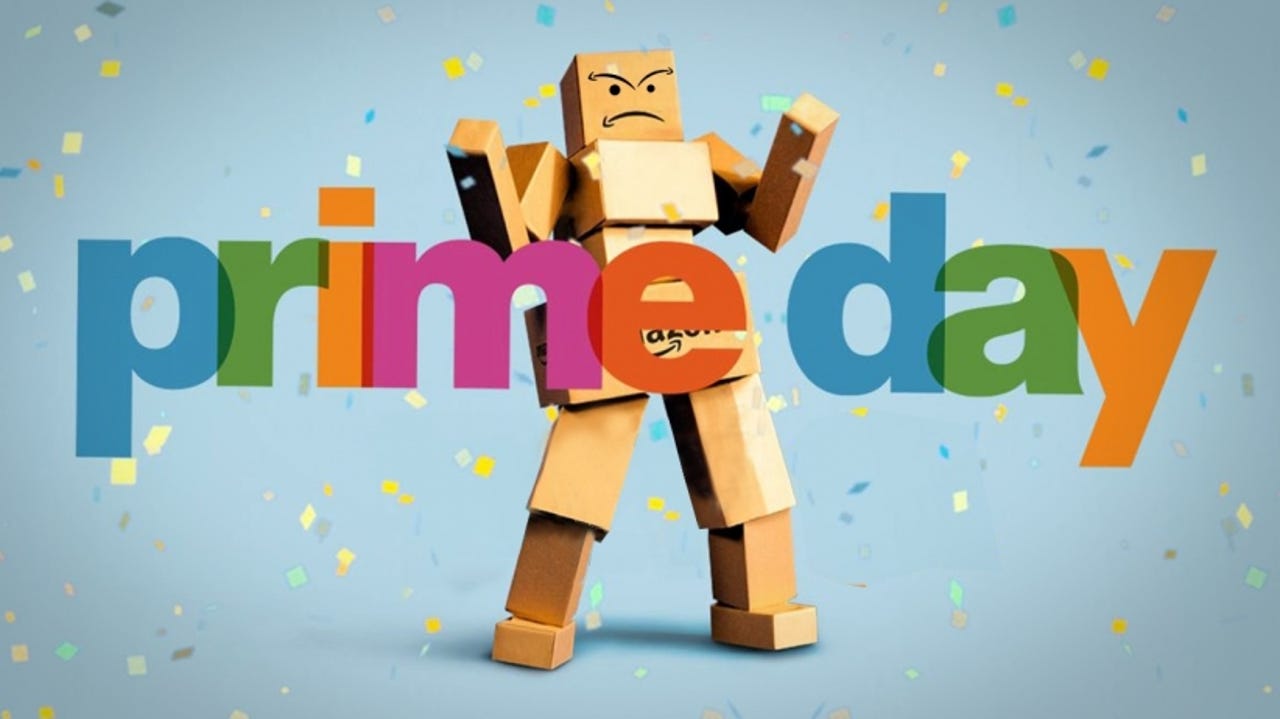Prime Day: A showcase for Amazon's engagement 'echosystem'

Well, while I am still heads down on writing the final chapters of my new book, The Commonwealth of Self-Interest: Customer Engagement, Business Benefit, now due out between June and August of next year from Harvard Business Press (a long-winded approach if I have ever had one), I, of course, continue to provide you with content I only wish I was smart enough and good enough to write. And my name isn't Stuart Smalley.
But my guest poster's name is Brent Leary -- who has graced these pages before. He is the owner and founder of CRM Essentials, and, if you don't already know this, is one of the world's foremost influencers and experts in CRM, small business, social media, the enterprise, and, as you probably now can guess, Amazon and its remarkable engagement ecosystem. His post here, appearing just in time for Prime Day 2017, gives you the inside scoop on the master plan Amazon has to continue to not just disrupt but engage to all our -- and certainly their -- great benefit. Brent is too humble to say this, but this post rocks.
Take it and run to your local... oh wait, you can order that online!
All yours, Brent!

(Image: Amazon)
Happy Prime Day!
Two years ago, Amazon marked the 20th anniversary of its founding with a special day of deals for approximately 44 million Amazon Prime members. And while many were underwhelmed by the kinds of items that were on sale, it went so well that Amazon repeated it last year, for approximately 63 million Prime members, racking up an estimated $500 to $600 million in sales. That's an estimated figure, since Amazon doesn't give out figures on what it sold on Prime Day, but it did say that it sold 60 percent more last year over the first Prime Day. Which is why it seems like this year it is pulling out even more stops... for approximately 85 million Prime members.
While it's still a ways off from the $3.4 billion people spent online during Black Friday last year, it ain't too shabby for something Amazon put together two short years ago. And it seems to be an important piece for showcasing the power of Amazon's growing "echosystem" of devices and services aimed at creating easier, more efficient experiences for its Prime members throughout the customer lifecycle. But this day also represents the overall impact Amazon will continue to have in shaping customer engagement for all of us.
Online sales still a drop in the overall sales bucket (but an increasingly bigger drop, thanks to Amazon)
The Commerce Department reports online sales grew 15.1 percent in 2016 and accounted for 8.1 percent of total retail sales for the year. But when you strip out things typically bought offline like gas and automobile purchases, Internet Retailer found ecommerce growth to be slightly higher at 15.6 percent, with online retail sales representing 11.7 percent of total.
Ecommerce accounted for 41.3 percent of the 3.9 percent growth total retail sales saw in 2016, according to Internet Retailer. And Amazon accounted for 43 percent of all online sales, as well as 53 percent of online sales growth in the US. And while Amazon only boasts a mere 5 percent share of total retail sales (excluding food), across the country, according to data from the US Census Bureau, that number was only 1 percent in 2013. So, Amazon is driving online sales to be an ever-increasing percentage of total retail sales.
One last thing, we all know how important mobile is to, well, everything at this point. And, according to Brad Rosen, founder and CEO of Drync, a venture-backed mobile Software-as-a-Service (SaaS) platform designed for beverage alcohol retailers, more than 72 percent of Amazon's customers buy on mobile today. So, they're leading the charge there, as well.
Amazon Prime is driving Amazon sales at an amazing pace
Amazon doesn't give us actual numbers when it comes to how many people are subscribed to Prime. But there are a number of analyst firms who are more than glad to take a whack at estimating how big the crowd is. And the numbers are pretty astounding.
Prime started out in 2005 offering two-day shipping for your purchases throughout the year for $79. Since then, it has added all sorts of services, from streaming videos and music to sharing digital books. And it's only increased the price once in the 12 years Prime has been around -- to $99. This has added up to a recent estimate of 85 million people being Prime members, with over half the households in America being represented. And that 85 million number is almost a doubling of the 44 million from two years ago. So expect to see estimates of hitting the 100-million mark in the not too distant future.
As impressive as these membership numbers are, what's even more impressive is the impact Prime members are having on not just Amazon sales numbers, but they are really the driving force behind the sales numbers above, as Statistica estimates 32 percent of all US ecommerce shoppers are Prime members. And Prime members spend almost twice as much at Amazon than non-Prime shoppers do annually ($1,300 versus $700), according to Consumer Intelligence Research Partners (CIRP). But a Statistica chart based on data from Morgan Stanley estimated, on average, a Prime subscriber in the US spends approximately five times more each year than non-Primers ($2,486 versus $544).
Marking the rise of the 'echosystem' and voice shopping
As a Prime member (since the beginning), I received an early invite in 2014 to buy the Echo at half price. Even though I really had no idea what the thing was, I was intrigued. And I wasn't alone, because in less than three years, a device that nobody knew exactly what it was has turned into device nobody can stop talking about... and talking to. CIRP estimates (because Amazon doesn't give out info on Echo sales) that approximately 8.2 million US Amazon customers own an Amazon Echo device, including the original Echo, Echo Dot, and Echo Tap. And based on that estimate, they also estimated Amazon sold approximately 3.1 million Echo devices in the US in the October to December 2016 period.
According to data from Slice Intelligence, the demographics of Echo device owners are evolving, from early adopters/hardcore online shoppers to mainstream shoppers. When the Echo first launched, 40 percent of new Echo purchasers were heavy online shoppers, spending more than $5,000 annually online. But by last holiday season, these hardcore shoppers accounted for only 28 percent of first-time Echo buyers. Additionally, women have increased their Echo adoption rates, as 50 percent of Echo revenue came from women, compared to only 23 percent at the device's launch.
All this adds up to some potentially enormous numbers. An RBC survey of 228 Amazon customers found 17 percent use Echo devices for ordering items already. And as I wrote about in my July column for CRM Magazine, by 2020, due to Amazon allowing third-party developers to use Echo hardware technology in their devices, RBC estimates upwards of 60 million Alexa devices could be sold annually, and 128 million Alexa devices could be installed by then, leading to a $5 billion in annual voice-driven sales. And many of the estimates for the Echo were out before the Echo Show was announced and available. (I'm writing this with my Echo Show right next to me -- taking a break and using it to do a video call with Paul about stuff.)
It's all about engagement
As you can see, combining multiple millions of Prime members with easy-to-use, voice-first devices is already having a significant impact on how we buy things, and it's fueling customer expectations for experiences and engagement. Which is where the focus continues to be, according to Amazon senior vice president and chief financial officer Brian T. Olsavsky on the most recent Amazon earnings call. He was asked if he was seeing the Echo devices having an impact in terms of Amazon customers spending more in particular categories like groceries or household products, because they have these devices in their kitchens and living rooms. He responded in with this from the call transcript:
That's not our primary issue right now. It's about building great products and delighting customers. As we pick up engagement with the devices, it helps the engagement with Amazon as a whole. So whether someone is ordering off their Alexa device or whether they're going to their phone, or going to their computer, it all has the same effect for us.
But even with that being the case, it's hard to overlook the fact that electronics is one of the leading sales categories for Amazon, and that the original Echo is on sale for Prime Day at its lowest price ever ($89.99, down from $179.99). And that a recent Stanford study shows speech recognition software can write text messages three times faster than human typing -- making devices like the Echo more efficient than typing, clicking, or swiping to get things done, like ordering things. Plus, this earnings call was before Amazon announced its intent to buy Whole Foods for $13.7 billion. So, I'm guessing the combination of Amazon Prime, Echo devices, and Whole Foods may have more people buying more food through this 'echosystem' after all.
Anyway, it's Primetime! Gotta start buying some stuff. Isn't that right, Alexa?
Related stories: